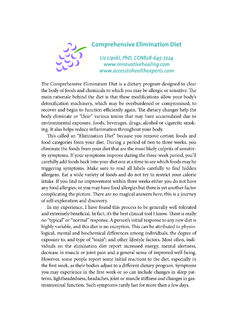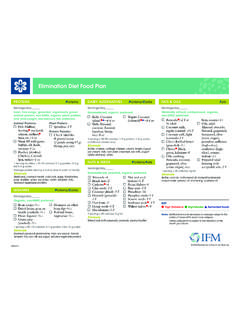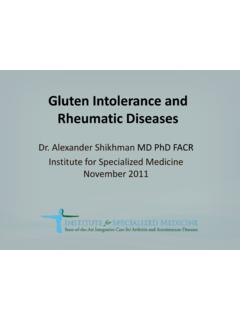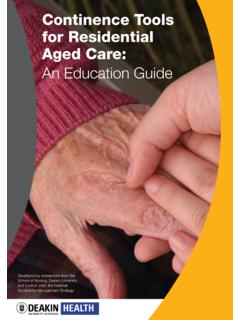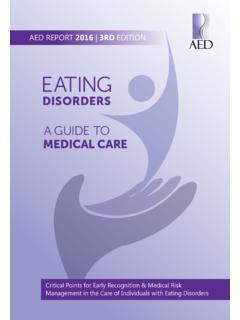Transcription of World Health Organization Global Strategy
1 World Health Organization Global Strategy on diet , physical Activity and Health In May 2004, the 57th World Health Assembly (WHA) endorsed the World Health Organization (WHO) Global Strategy on diet , physical Activity and Health . The Strategy was developed through a wide-ranging series of consultations with all concerned stakeholders in response to a request from Member States at World Health Assembly 2002 (Resolution ). The Strategy , together with the Resolution by which it was endorsed ( ), are contained in this document.
2 World Health Organization Global Strategy on diet , physical Activity and Health 1. Recognizing the heavy and growing burden of noncommunicable dis- eases, Member States requested the Director-General to develop a glob- al Strategy on diet , physical activity and Health through a broad consul- tation To establish the content of the draft Global Strategy , six regional consultations were held with Member States, and organiza- tions of the United Nations system, other intergovernmental bodies, and representatives of civil society and the private sector were consult- ed.
3 A reference group of independent international experts on diet and physical activity from WHO's six regions also provided advice. 2. The Strategy addresses two of the main risk factors for noncommuni- cable diseases, namely, diet and physical activity, while complement- ing the long-established and ongoing work carried out by WHO and nationally on other nutrition-related areas, including undernutrition, micronutrient deficiencies and infant- and young-child feeding. 1. Resolution . Global Str ategy on diet , The challenge of disease, age-specific death and disease rates have 3.
4 A profound shift in the balance of the been slowly declining. Progress is being made in re- major causes of death and disease has already ducing premature death rates from coronary artery occurred in developed countries and is under way disease, cerebrovascular disease and some tobacco- in many developing countries. Globally, the burden related cancers. However, the overall burden and of noncommunicable diseases has rapidly increased. number of patients remain high, and the numbers In 2001 noncommunicable diseases accounted for al- of overweight and obese adults and children, and of most 60% of the 56 million deaths annually and 47% cases, closely linked, of type 2 diabetes are growing of the Global burden of disease.
5 In view of these fig- in many developed countries. ures and the predicted future growth in this disease 8. Noncommunicable diseases and their risk factors are burden, the prevention of noncommunicable diseases initially mostly limited to economically successful presents a major challenge to Global public Health . groups in low- and middle-income countries. How- 4. The World Health report 20022 describes in detail how, ever, recent evidence shows that, over time, patterns in most countries, a few major risk factors account of unhealthy behaviour and the noncommunicable for much of the morbidity and mortality.
6 For non- diseases associated with them cluster among poor communicable diseases, the most important risks communities and contribute to social and economic included high blood pressure, high concentrations inequalities. of cholesterol in the blood, inadequate intake of fruit 9. In the poorest countries, even though infectious and vegetables, overweight or obesity, physical inac- diseases and undernutrition dominate their current tivity and tobacco use. Five of these risk factors are disease burden, the major risk factors for chronic closely related to diet and physical activity.
7 Diseases are spreading. The prevalence of overweight 5. Unhealthy diets and physical inactivity are thus and obesity is increasing in developing countries, among the leading causes of the major noncommu- and even in low-income groups in richer countries. nicable diseases, including cardiovascular disease, An integrated approach to the causes of unhealthy type 2 diabetes and certain types of cancer, and con- diet and decreasing levels of physical activity would tribute substantially to the Global burden of disease, contribute to reducing the future burden of noncom- death and disability.
8 Other diseases related to diet municable diseases. and physical inactivity, such as dental caries and os- 10. For all countries for which data are available, the un- teoporosis, are widespread causes of morbidity. derlying determinants of noncommunicable diseases 6. The burden of mortality, morbidity and disability are largely the same. Factors that increase the risks of attributable to noncommunicable diseases is cur- noncommunicable disease include elevated consump- rently greatest and continuing to grow in the devel- tion of energy-dense, nutrient-poor foods that are high oping countries, where those affected are on average in fat, sugar and salt; reduced levels of physical activ- younger than in developed countries, and where ity at home, at school, at work and for recreation and 66% of these deaths occur.
9 Rapid changes in diets transport; and use of tobacco. Variations in risk levels and patterns of physical activity are further caus- and related Health outcomes among the population ing rates to rise. Smoking also increases the risk for are attributed, in part, to the variability in timing and these diseases, although largely through indepen- intensity of economic, demographic and social chang- dent mechanisms. es at national and Global levels. Of particular concern 7. In some developed countries where noncommuni- are unhealthy diets, inadequate physical activity and cable diseases have dominated the national burden energy imbalances in children and adolescents.
10 2. The World Health report 2002. Reducing risks, promoting healthy life. Geneva, World Health Organization , 2002.. physical Activity and Health 11. Maternal Health and nutrition before and during ruptive effect of disease on development, and the im- pregnancy, and early infant nutrition may be impor- portance for economic development of investments tant in the prevention of noncommunicable diseases in Programmes aimed at promoting healthy throughout the life course. Exclusive breastfeeding for diets and physical activity for the prevention of dis- six months and appropriate complementary feeding eases are key instruments in policies to achieve de- contribute to optimal physical growth and mental de- velopment goals.










